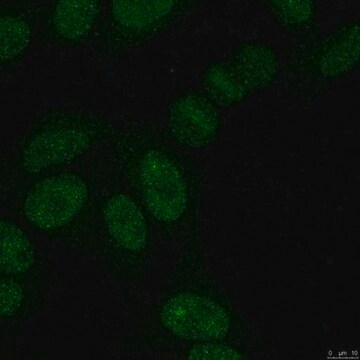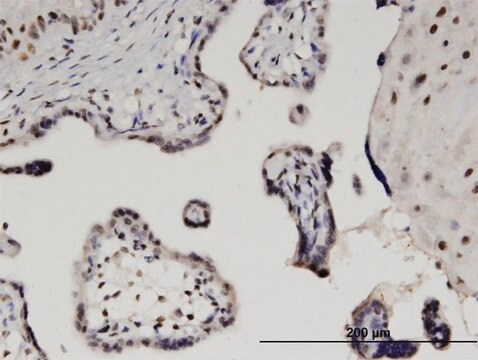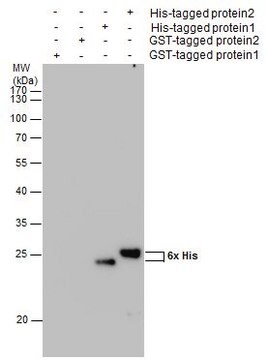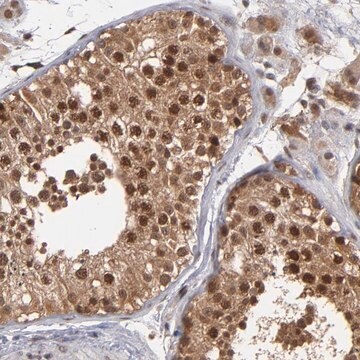Key Documents
SAB4200190
Anti-Sumo-2/3 antibody, Rat monoclonal
clone 3H12, purified from hybridoma cell culture
Synonim(y):
Anti-HSMT3, Anti-MGC117191, Anti-SMT3 homolog 2, Anti-SMT3 suppressor of mif two 3 homolog 2, Anti-SMT3B, Anti-SMT3H2, Anti-sentrin 2, Anti-small ubiquitin-like modifier 2, Anti-small ubiquitin-related modifier 2, Anti-ubiquitin-like protein SMT3B, Monoclonal Anti-Sumo-2/3, SUMO-2/3, SUMO2/3
About This Item
Polecane produkty
białko sprzężone
unconjugated
forma przeciwciała
purified from hybridoma cell culture
rodzaj przeciwciała
primary antibodies
klon
3H12, monoclonal
Postać
buffered aqueous solution
masa cząsteczkowa
~11 kDa
reaktywność gatunkowa
mouse, rat, human
stężenie
~1.0 mg/mL
metody
immunocytochemistry: suitable
western blot: 2-4 μg/mL using HeLa cell nuclear extract
numer dostępu UniProt
Warunki transportu
dry ice
temp. przechowywania
−20°C
docelowa modyfikacja potranslacyjna
unmodified
informacje o genach
human ... SUMO3(6612)
mouse ... Sumo3(20610)
rat ... Sumo3(499417)
Opis ogólny
Immunogen
Zastosowanie
Działania biochem./fizjol.
Postać fizyczna
Oświadczenie o zrzeczeniu się odpowiedzialności
Nie możesz znaleźć właściwego produktu?
Wypróbuj nasz Narzędzie selektora produktów.
Kod klasy składowania
10 - Combustible liquids
Temperatura zapłonu (°F)
Not applicable
Temperatura zapłonu (°C)
Not applicable
Certyfikaty analizy (CoA)
Poszukaj Certyfikaty analizy (CoA), wpisując numer partii/serii produktów. Numery serii i partii można znaleźć na etykiecie produktu po słowach „seria” lub „partia”.
Masz już ten produkt?
Dokumenty związane z niedawno zakupionymi produktami zostały zamieszczone w Bibliotece dokumentów.
Nasz zespół naukowców ma doświadczenie we wszystkich obszarach badań, w tym w naukach przyrodniczych, materiałoznawstwie, syntezie chemicznej, chromatografii, analityce i wielu innych dziedzinach.
Skontaktuj się z zespołem ds. pomocy technicznej








